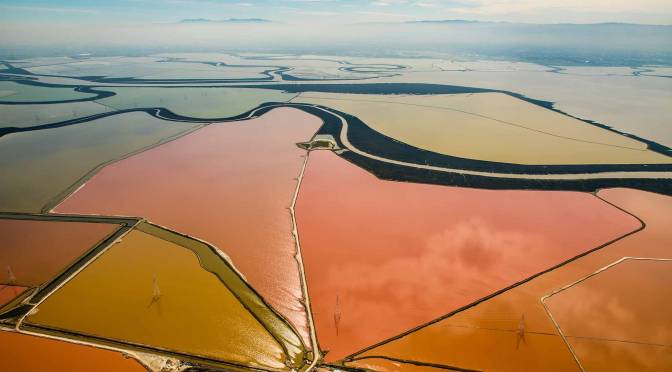The San Joaquin River and its tributaries drain a significant portion of the Sierra Nevada Mountains and the southern half of California’s Central valley. The San Joaquin River, along with its northern sibling, the Sacramento River, terminate at the delta of the same name. Significant human influence on the course and flow of the river started in the late 1800s to help divert water to developing agricultural regions in the Central Valley and continues to this day. The biggest river restoration project in California’s history, however, is now underway for the San Joaquin River (watch this segment from a recent episode of QUEST to learn more).
This brief post is meant to introduce some of the basic and fundamental geologic context for the river. The geologic map above, which shows a simplified distribution of the types and ages of rock at the surface, nicely illustrates the juxtaposition of the river with California’s geology. The full version of the map and an explanation of the colors can be found on the Educational Resources Center page of the California Geological Survey website.
The San Joaquin River traverses two geologic provinces in California that could not be more different — the high mountains and exposed granitic rock of the southern Sierra Nevada (the red and blue areas on the map above) and the topographically flat and sediment-filled Central Valley (the light yellow area in the map above). The headwaters for the San Joaquin River and it’s tributaries to the north are lined up along the 9,000-14,000 ft high spine of the Sierra cutting canyons and gorges from east to west across the mountains (including the Merced River in Yosemite Valley).
The result of the combination of high elevations, eroding granite, and rivers is a lot of sediment. Over hundreds of thousands to millions of years, the erosion and transport of sediment from the high country is balanced by deposition of that sediment in the adjacent low and flat Central Valley. In fact, the Central Valley is flat because of these processes. When the rivers naturally flood they overspill their banks and fine, muddy sediment is deposited across broad areas. Over geologic time, the rivers move around incrementally building up sediment and covering the entire valley. The result of these processes is a vast and soil-rich valley that is now one of the world’s most productive agricultural regions.

